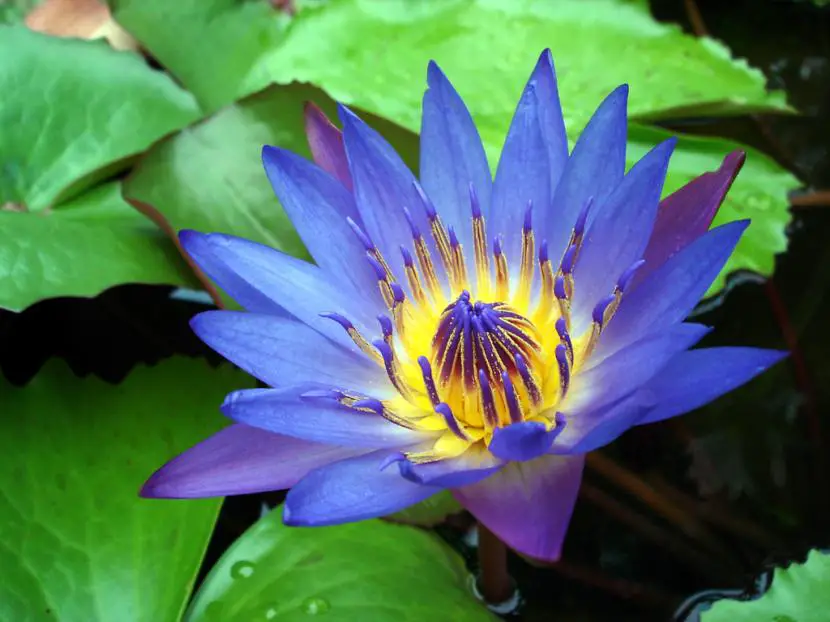
We recently learned all about one of the most practical aquatic plants in the world: the Papyrus from egypt, which was used to build boats and also to make the first paper. Today we bring you the file of another of the aquatic plants of this same country, the Blue lotuswhose scientific name is Blue water lilies. Another ideal plant to have in the pond, without a doubt.
If you want to know everything about this wonderful water lily, keep reading.

The blue lotus is mainly native to the Nile, but already in ancient times it spread to other places such as Thailand and India. During the time of the ancient Egyptians, it was a very revered plantSince it is a plant whose flower opens in the morning and closes at night, it reminded them of the daily cycle starring the sun god (Ra), who brings us dawn and dusk as it sets.
This aquatic plant is, as we said, an ideal plant to have in ponds, or even, if you don’t have it, can be planted in large paint buckets (Of the 15l ones, although the bigger and wider it is, the more leaves it will get. But it will grow quite well anyway, and it is very likely that it will flower).

The leaves are up to 20cm wide, with a notch on one side. The flowers are about 15cm in diameter, with numerous blue petals. It is sensitive to frost, that is why in cold climates its cultivation indoors or in a greenhouse is recommendedas long as you can have at least 6 hours of natural light. The same time of direct sun needs if it is grown outdoors.
To achieve good germination, it is recommended, with sandpaper, to file the seeds a little, and place them in a glass of water. The temperature should be warm, therefore sowing will take place from March-April. It is important that gravel and some organic fertilizer have been introduced into the seedbed, because if not, the plant will not be able to grow properly.
What did you think of the Blue Lotus?

